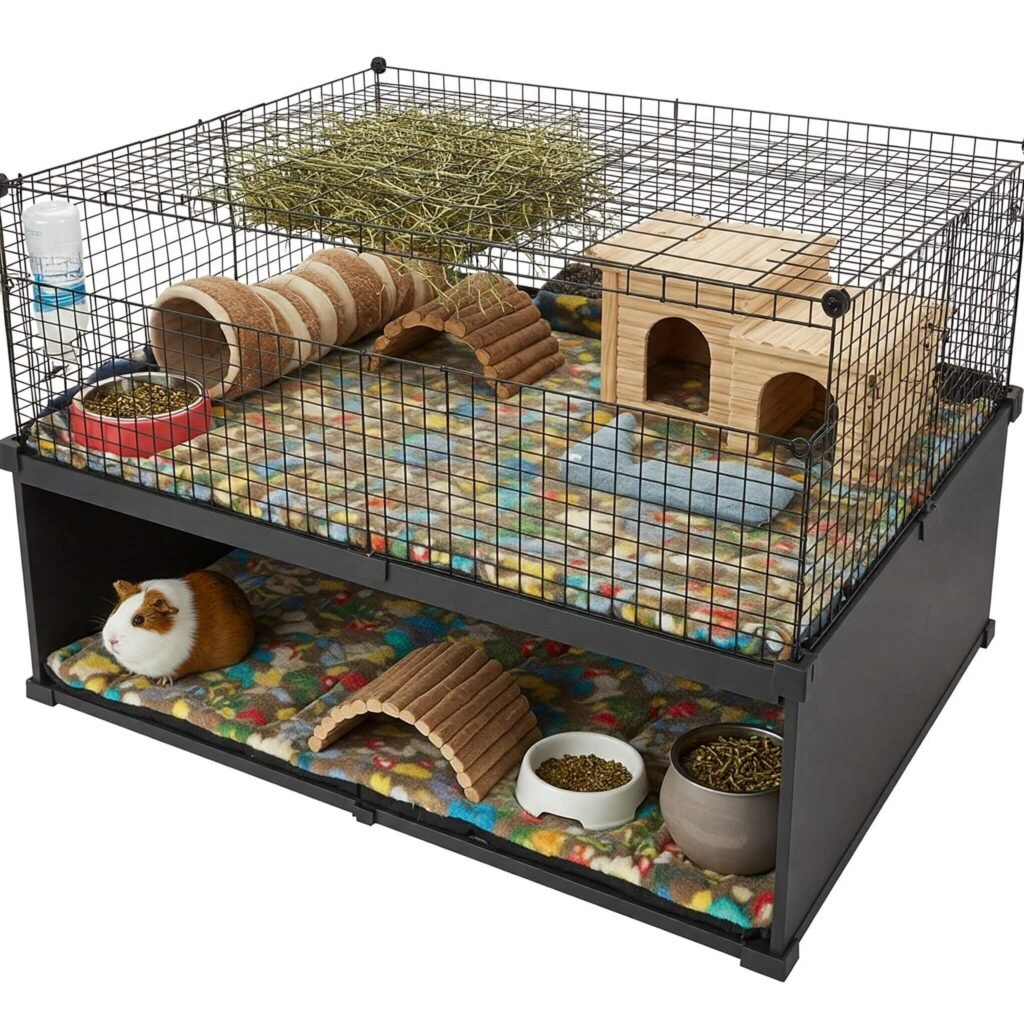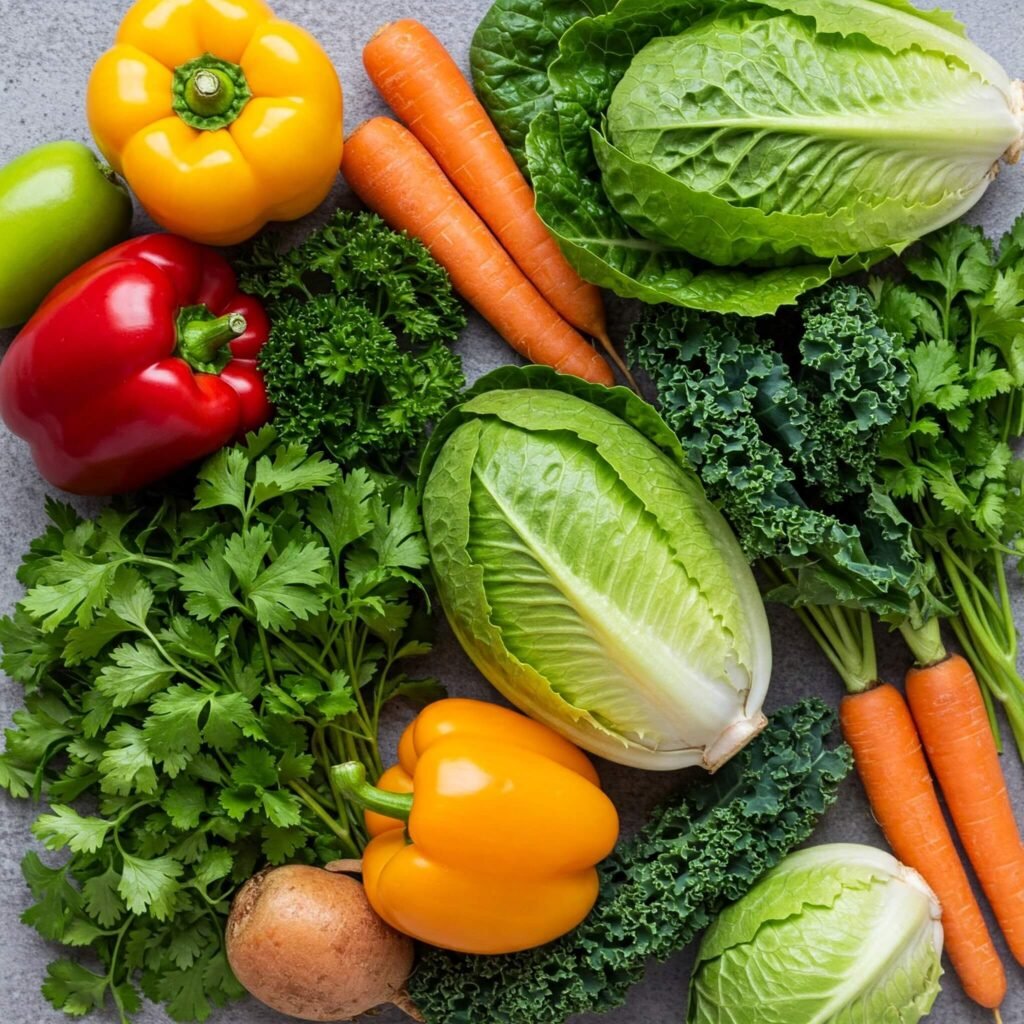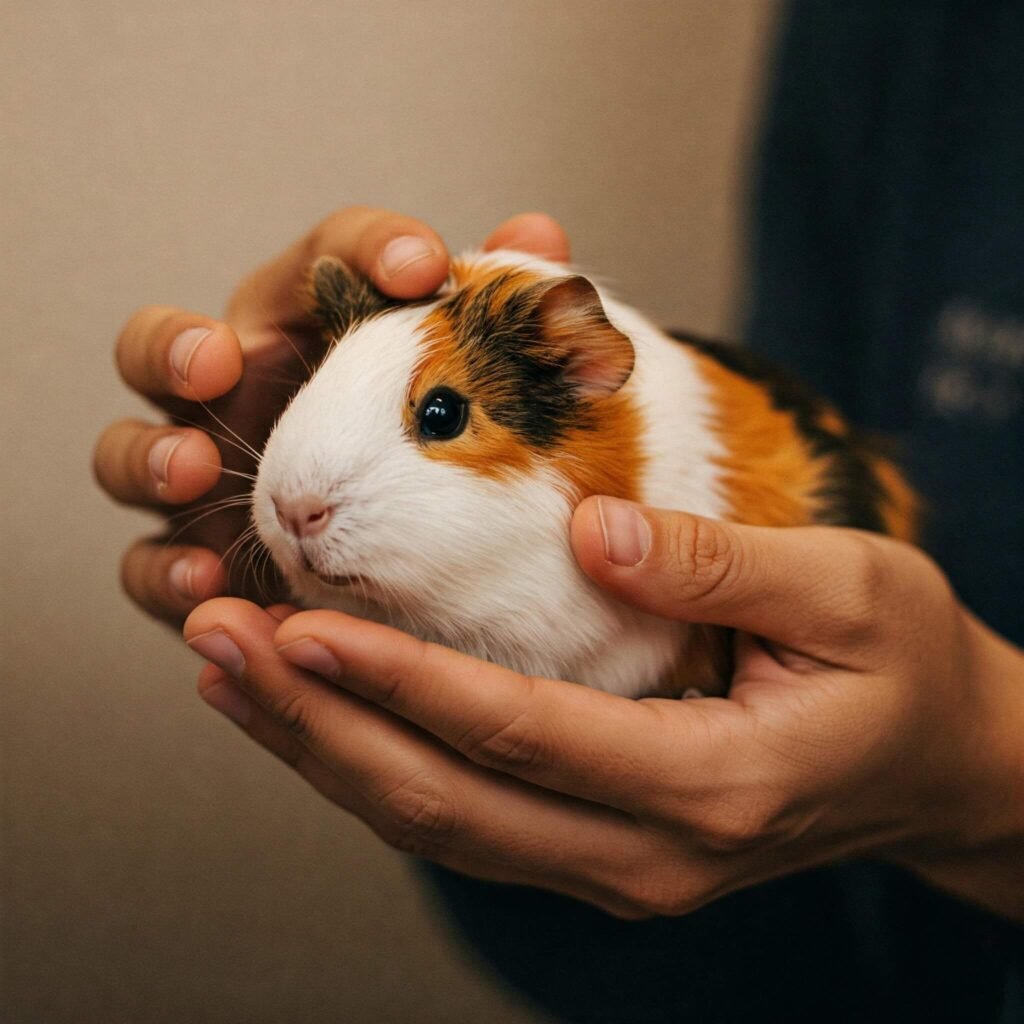Creating a Comfortable Home for Your Cavies
Providing the right environment is the first step in responsible guinea pig care. Their housing needs are specific, and consequently, a comfortable, safe cage is paramount.
Selecting the Right Cage for Your Little Friend
- First, size matters: Guinea pigs need plenty of space. A minimum of 7.5 square feet for two guinea pigs is recommended. Bigger is always better! Consider a cage that is at least 30″ x 50″ for a pair.
- Second, opt for a solid bottom: Avoid wire-bottomed cages as they can injure your pet’s delicate feet. Instead, choose a cage with a solid plastic or coroplast base.
- Furthermore, ensure good ventilation: The cage should have good air circulation. Therefore, avoid placing it in direct sunlight, drafts, or humid areas.
- Finally, multiple levels are optional: While not strictly necessary, ramps and multiple levels can add enrichment to their environment, but ensure ramps are not too steep or slippery.

Choosing Suitable Bedding for Guinea Pig Enclosures
- To begin with, choose safe options: Select bedding that is absorbent, dust-free, and safe for guinea pigs. Good options include fleece liners, paper-based bedding, or aspen shavings. However, avoid cedar and pine shavings as they contain oils that can be harmful.
- Moreover, regular cleaning is essential: Spot clean the cage daily, removing soiled bedding. Additionally, a full cage clean-out should be done at least once a week to prevent ammonia buildup, which is harmful to their respiratory system.
Providing Secure Hideaways for Your Guinea Pigs
Guinea pigs are prey animals and thus need places to feel safe and secure. Provide at least one hideout per guinea pig.
- For instance, variety is key: Offer different types of hideouts, such as small wooden houses, tunnels, or even cardboard boxes.
- Furthermore, consider placement: Scatter hideouts throughout the cage so each guinea pig has easy access to one.
Nutritional Needs for a Healthy Guinea Pig
A balanced diet is fundamental to good guinea pig care. Essentially, their diet primarily consists of hay, fresh vegetables, and a small amount of high-quality pellets.
The Importance of Hay in a Guinea Pig’s Diet
- Indeed, Timothy hay is essential: Timothy hay should make up the majority of your guinea pig’s diet. It provides essential fiber for digestion and helps wear down their continuously growing teeth.
- Therefore, ensure availability: Fresh hay should always be available in a hay rack or feeder.
Offering Fresh Vegetables for Guinea Pig Vitality
- Firstly, variety is important: Offer a variety of fresh vegetables daily to provide essential vitamins and minerals, particularly Vitamin C, which guinea pigs cannot produce on their own.
- Secondly, choose good options: Excellent options include bell peppers (especially red, yellow, and orange), leafy greens (like romaine lettuce and kale), parsley, and cilantro.
- However, exercise moderation: Some vegetables, such as spinach and broccoli, should be given in moderation due to their calcium content. Finally, avoid iceberg lettuce as it offers little nutritional value.

Understanding Pellets as Part of Guinea pig care Nutrition
- To begin with, offer a limited quantity: Guinea pig pellets should be a small part of their diet. Choose a high-quality brand specifically formulated for guinea pigs. Avoid pellets with added nuts and seeds, as these are often too high in fat.
- Moreover, ensure Vitamin C fortification: Check that the pellets are fortified with Vitamin C, but remember that fresh vegetables are a better primary source.
- Finally, pay attention to expiration dates: Pellets lose their Vitamin C potency over time, so buy in smaller quantities and check expiration dates.
Ensuring Constant Access to Clean Water for Your Pet
- Provide either a water bottle or bowl: Ensure fresh, clean water is available at all times using either a sipper bottle or a heavy ceramic bowl.
- Crucially, change the water daily: Do this to prevent bacteria growth. Furthermore, clean the bottle or bowl regularly.
Interacting with Your Guinea Pig: Handling and Socialization
Guinea pigs are social animals and consequently benefit from gentle handling and interaction.
Tips for Gently Picking Up Your Guinea Pig
- Initially, be patient: Guinea pigs can be skittish at first. Approach them calmly and speak softly.
- Next, support their body: Always support their entire body when picking them up, with one hand under their chest and the other supporting their hindquarters.
- Finally, avoid startling them: Never grab them suddenly or from above, as this can mimic a predator.
Why Social Time is Important for Guinea Pigs
- Because they are social, companionship is key: Guinea pigs thrive in pairs or small groups. Therefore, if you only have one, dedicate time each day for interaction.
- Additionally, allow supervised playtime: Let your guinea pig have supervised playtime outside their cage in a safe, enclosed area. This provides exercise and mental stimulation.

Keeping Your Guinea Pig Healthy and Clean
Regular health checks and good hygiene are crucial for preventing illness in your guinea pig.
Recognizing Signs of Illness in Your Cavy
- Firstly, watch for changes in appetite or thirst: A sudden decrease or increase in food or water intake can be a sign of illness.
- Secondly, observe their activity levels: A normally active guinea pig that is suddenly sluggish should be checked.
- Furthermore, monitor their waste: Changes in droppings or urine, such as diarrhea, constipation, or blood, are serious signs.
- In addition, be aware of respiratory issues: Difficulty breathing or sneezing are common in guinea pigs.
- Finally, check for skin problems: Hair loss, itching, or sores can indicate parasites or infections.
If you notice any of these signs, consult an exotic animal veterinarian immediately.
Essential Grooming Practices for Guinea Pig Wellbeing
- Regularly, trim their nails: Guinea pig nails grow continuously and need regular trimming (usually every 4-6 weeks) to prevent overgrowth and potential injury. Ask your vet to show you the proper technique.
- Also, brush them regularly: Regular brushing, especially for long-haired breeds, helps prevent mats and keeps their coat healthy.
- Finally, clean their ears if needed: Check your guinea pig’s ears regularly for wax buildup and gently clean them with a veterinarian-approved solution if needed.
The Role of Veterinary Care in Guinea Pig Health
- Annually, schedule exams: Have annual check-ups with a veterinarian experienced in treating exotic animals. These check-ups can help detect potential health problems early.

